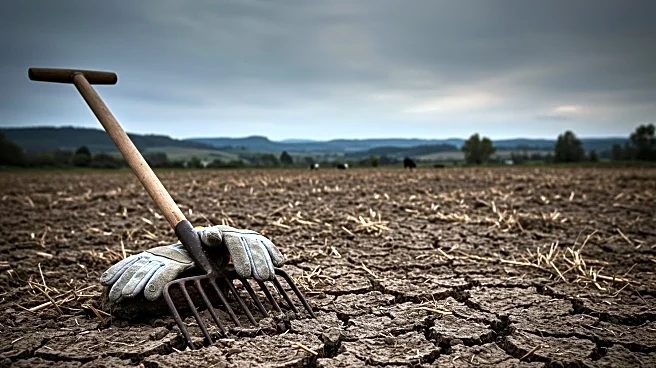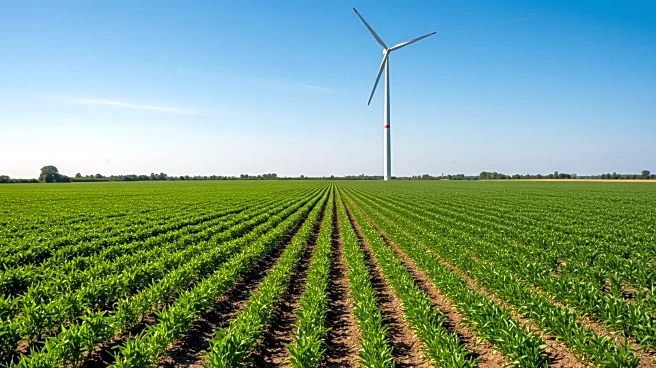What's Happening?
The Department of Agriculture has reported a decline in agricultural employment, with job opportunities falling by 24,000 in the second quarter compared to the first. This drop is attributed to challenges in the livestock industry, certain crops, and aquaculture, primarily due to outbreaks of foot-and-mouth disease (FMD). Despite these setbacks, agricultural employment remains above the long-term average, with a year-on-year increase of 1%. The sector has seen robust production in field crops and horticulture, with forecasts predicting a significant increase in the summer grains and oilseeds harvest. However, ongoing FMD outbreaks and trade concerns continue to pose risks to agricultural jobs.
Why It's Important?
The decline in agricultural employment highlights the vulnerability of the sector to disease outbreaks and environmental factors. Foot-and-mouth disease, in particular, is exerting financial pressure on the livestock industry, which could lead to further job losses if not addressed. The situation underscores the need for effective disease management and trade policies to safeguard employment in agriculture. Additionally, the sector's resilience, demonstrated by increased production in certain subsectors, offers a potential buffer against these challenges. The broader impact on the economy is significant, as agriculture plays a crucial role in job creation and economic stability.
What's Next?
Efforts to mitigate the impact of foot-and-mouth disease and improve trade relations are critical to stabilizing agricultural employment. The government may need to implement strategies to enhance disease control and support affected industries. Additionally, improving infrastructure and service delivery could bolster long-term growth and job creation in agriculture. The release of government-owned land to beneficiaries could also stimulate economic activity and employment opportunities in rural areas.
Beyond the Headlines
The ongoing challenges in agriculture, such as poor infrastructure and crime, highlight systemic issues that need addressing to ensure sustainable growth. The potential positive economic impact of fully utilizing government-acquired farmland could be significant, offering a pathway to increased employment and economic development in rural communities.











